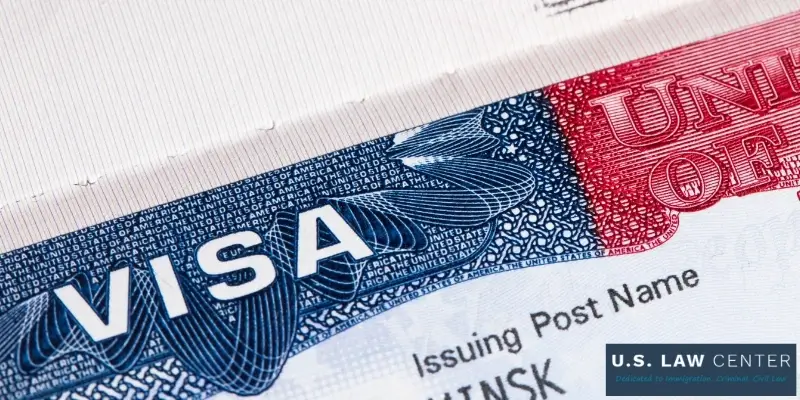Individuals who obtain their permanent residency status through marriage may receive conditional green cards, which come with certain restrictions and requirements. Therefore, submitting Form I-751 to receive a standard 10-year green card is an exciting step in an individual’s immigration journey. When initiating the filing process, applicants commonly ask, “What is Form I-751?”
By understanding the definitions and processes associated with Form I-751, applicants can empower themselves to navigate the filing process successfully.
What Is Form I-751?
Individuals who obtain their green card by marrying a lawful permanent resident or US citizen are initially delegated a conditional green card if they were married for less than two years at the time the application was approved. These temporary conditions are put in place to ensure that the marriage was authentic and not fraudulent.
Simply put, Form I-751, otherwise known as the Petition to Remove Conditions on Residence, is a form that must be submitted to remove certain conditions associated with a conditional green card. It is critical to file Form I-751 on time, as conditional permanent resident status is only valid for two years. If the form is not filed on time, applicants may lose their status.
Form I-751 must be filed in the 90 days leading up to the expiration of the conditional residence card. Applicants who successfully file Form I-751 and obtain approval will be able to remove the conditions on their status and receive a standard 10-year green card.
How to File Form I-751
The filing process is different for applicants who are still in their marriage and those who are no longer with the spouse in the marriage recognized to obtain the conditional green card.
If the marriage with the US citizen or lawful permanent resident is still intact, the spouses should file Form I-751 jointly in the 90-day period leading up to expiration. Evidence including property ownership, birth certificates of children, joint financial records, and other documents that show the marriage is ongoing and was entered into in good faith must be submitted as well.
In some cases, it is possible to file a Form I-751 without the other spouse. Reasons for doing so include abuse or cruelty committed by the former spouse, divorce after a good faith marriage, death of the spouse after a good faith marriage, or the potential of extreme hardship if lawful permanent resident status is terminated. For individual filing cases, ample evidence will need to be submitted to support reasons for filing alone.
Further requirements include the successful payment of a filing fee and a fee for biometric services. All documents will need to be sent to the appropriate United States Citizenship and Immigration Services (USCIS) address. A dedicated and experienced family immigration lawyer can help you ensure you submit an accurate and evidence-backed form on time.
How Can I Ensure That My Form I-751 Will Be Accepted?
To ensure the efficient and successful submission of Form I-751 and that the conditions on your green card will ultimately be lifted, it is critical to ensure that you file your documents on time. It is recommended to file the form as soon as possible within the 90-day period leading up to the expiration date of your conditional green card. Furthermore, a complete and accurate application should be submitted to avoid a request for evidence or further delay.
By working with an experienced immigration lawyer, you can ensure all requirements are met. They can help you provide adequate documentation to clearly demonstrate that you entered your marriage in good faith and that it is ongoing if you are filing jointly. If you are filing by yourself, they can help you determine which reason fits your case, assisting with submitting adequate documentation to back your claim.
Form I-751 processing is lengthy and often takes more than a year, although exact timelines vary by service center and the type of case. USCIS advises applicants to track current estimates through its Processing Times Tool.
As of July 2025, the USCIS filing fee for Form I-751, Petition to Remove Conditions on Residence, is $750, plus a $85 biometric services fee per applicant. Under the HR-1 reconciliation law, USCIS is now required to collect additional immigration fees in certain categories.
For Form I-751, waivers apply if filing without a spouse due to divorce, abuse, or death. Documentation you need for the form may include court orders, police reports, or death certificates.
Late filings require written explanations citing “good cause” or extenuating circumstances, such as illness, deployment, or emergencies, with supporting evidence for USCIS review. Immigration matters in California are handled at:
USCIS Los Angeles Field Office
300 North Los Angeles Street, Room 1001
Los Angeles, CA 90012
USCIS San Francisco Field Office
630 Sansome Street, 4th Floor
San Francisco, CA 94111
What Happens After Filing?
Once you file Form I-751, someone with USCIS can issue you a receipt of notice. This extends your green card. You may then be asked to submit additional proof of your marital relationship. Not all forms of evidence are equally strong. Compelling documentation can include joint tax returns, shared leases or mortgages, joint bank accounts, and health or auto insurance policies.
Supporting evidence can help as well. These can include photographs taken over time, travel itineraries, and even affidavits from friends or family members. Combined, these can strengthen your documentation and reduce the likelihood that your application is delayed. A good mix of financial, legal, and personal records demonstrates the ongoing nature of your relationship.
USCIS may issue an RFE if documents are missing or incomplete. Missing the 90-day filing window risks denial and termination of status, though late filings may be excused for good cause. Expired cards jeopardize work and travel authorization.
Why You Should Hire an Immigration Lawyer
If you are preparing to petition to remove conditions on your residency status, your first step should be to hire an immigration lawyer. Immigration law is continually changing. Last year, for example, USCIS updated its guidance on Form I-751 to consolidate rules for joint petitions, waivers, and late filings. On October 20, 2025, USCIS updated its English and civics test requirements.
An immigration attorney can help you navigate the process of petitioning to remove conditions to your residency status based on federal immigration laws. Lawyers bring years of experience handling complex immigration cases that require filing Form I-751 and other forms. Providing the right documentation is crucial, and forms must be completed accurately to avoid delays or more serious setbacks.
In 2024, there was a 7% decline in the number of citizens welcomed to the United States compared to the year prior. This is due in part to increased scrutiny of application forms. For individuals seeking to move to the United States or stay here indefinitely, thereby joining 47.8 million immigrants already residing here, legal representation is critical.
FAQs
Does an I-751 Extend a Green Card?
Yes, Form I-751, Petition to Remove Conditions on Residence, extends a green card for a period of 48 months while the application is going through processing. To prove your extended status, you will get an official notice, Form I-797, which will serve as your temporary documentation. To understand the exact conditions of your green card extension, it is recommended to work with a knowledgeable immigration lawyer.
How Long Does It Take to Get I-751 Approved?
The processing time for Form I-751 varies depending on different factors, such as the caseload at USCIS, the complexity of your case, and the correctness and completeness of your application. As requests for information from USCIS can significantly slow down the processing of your case, it is recommended to work with an experienced lawyer who can ensure that a robust application is filed on your behalf.
What Happens When You File I-751?
After you file Form 1-751, USCIS will start processing your application. Furthermore, they may require you to attend a biometrics appointment to get your photo, fingerprints, and signature. An interview may also be scheduled, in which you will need to answer questions about your application. After the petition is approved, you will no longer have conditions on your residency and receive a green card that lasts for a period of 10 years.
Can You File a Form I-751 by Yourself?
Yes, it is possible to file Form I-751 without your spouse, but this is only allowed in certain circumstances. Accepted reasons for filing alone include claiming extreme hardship if your status would be terminated, the death of your spouse, divorce or annulment of your marriage, or if you were battered or subjected to extreme cruelty by your spouse. It’s important to note that sufficient evidence must be provided to support your reasons for filing alone.
Get Critical Support With Your Family-Based Green Card Processes
If you are a conditional permanent resident looking to remove the conditions on your green card, submitting Form I-751 is a crucial step to obtaining permanent residency. A compassionate and experienced immigration lawyer from U.S. Law Center can help you accurately submit this form, ensuring that your filing process is efficient. Contact us today to work toward your standard 10-year green card.


